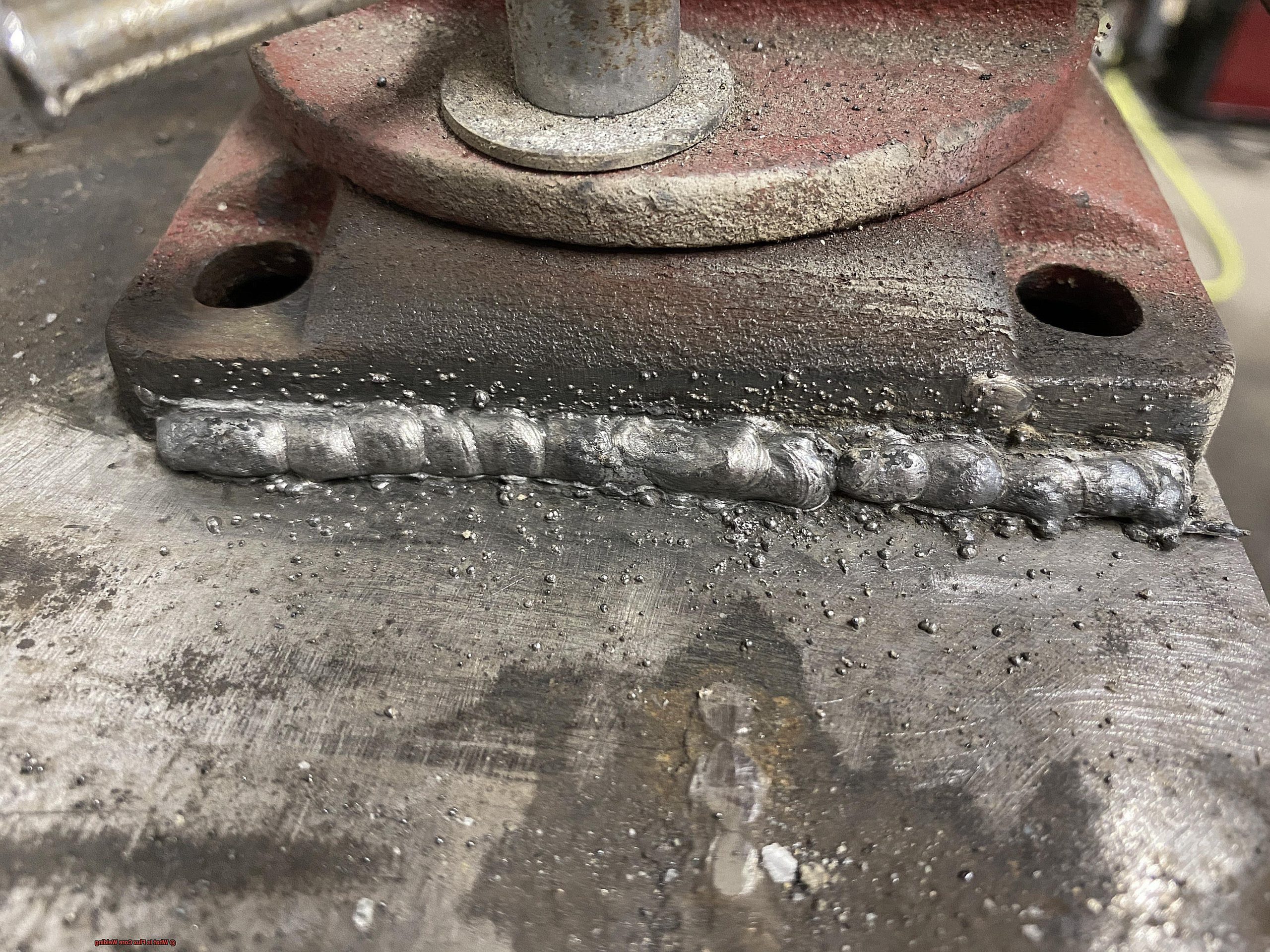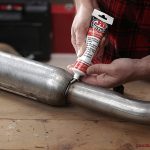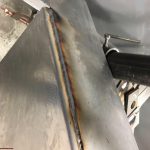Are you curious about the secrets behind creating strong, stable and resilient welds in metals used for construction and fabrication? If yes, then let’s explore the world of Flux Core Welding together.
Flux Core Welding is a process that involves melting and fusing two pieces of metal together with a continuous wire electrode. It’s a type of arc welding that uses a flux-filled wire electrode to protect the weld pool from contamination and oxidation while providing shielding gas.
This welding technique is widely used in construction, manufacturing, and repair industries due to its affordability, ease of use, and quality results. With Flux Core Welding, you can create high-quality welds that are strong enough to endure extreme temperature conditions and heavy-duty applications.
However, Flux Core Welding isn’t your run-of-the-mill welding technique. It demands specific equipment and techniques along with understanding types of wire electrodes, shielding gases, and filler metals. So if you’re eager to learn about and master Flux Core Welding, then this article will be your ultimate guide.
We’ll discuss everything you need to know about What is Flux Core Welding – how it works, its pros and cons – enabling you to become an expert in no time. So buckle up as we embark on this exciting journey.
Comparison between Flux Core and MIG Welding
Contents
Though they may seem similar at first glance, these techniques each have their own unique advantages and applications.
Flux core welding is like a superhero with its own protective shield. It uses a wire electrode filled with flux that melts and creates a protective shield around the molten metal. This process eliminates the need for an external shielding gas, making it perfect for outdoor or windy conditions. Plus, it’s faster than MIG welding due to its higher deposition rates.
MIG welding, on the other hand, uses a solid wire electrode fed through a spool gun or wire feeder with a shielding gas that protects the weld from atmospheric contamination. The result? Cleaner welds with less spatter, making it ideal for applications where appearance is important. Plus, MIG welding is more precise, making it better suited for thin materials.
But which technique should you choose? That depends on your specific application and preferences. If you need to work outdoors or in windy conditions, flux core welding is the way to go. But if appearance and precision are important factors in your project, MIG welding may be the better choice.
Types of Flux Core Welding
If you’re looking for a welding technique that provides a protective shield against atmospheric contamination, flux core welding is the way to go. With three main types of flux core welding available, understanding their differences is key to choosing the right one for your project.
First up is self-shielded flux core welding, which is perfect for outdoor welding and situations where access to shielding gas is limited. The wire electrode contains all the necessary shielding elements, including flux that creates a protective gas during the welding process. It’s like having a superhero that doesn’t need any help – equipped with everything needed to get the job done quickly and efficiently. This type of welding is ideal for field repairs and construction work where speed and ease of set-up are critical.
Next up is dual-shielded flux core welding, which uses both a flux-core wire electrode and an external shielding gas. The external shielding gas provides additional protection against atmospheric contamination, resulting in stronger welds and less spatter. Think of this type of welding as a superhero duo – the flux-core wire electrode and the external shielding gas work together to create a formidable team. Dual-shielded welding is commonly used in heavy fabrication work such as shipbuilding, structural steel work, and pipeline construction.
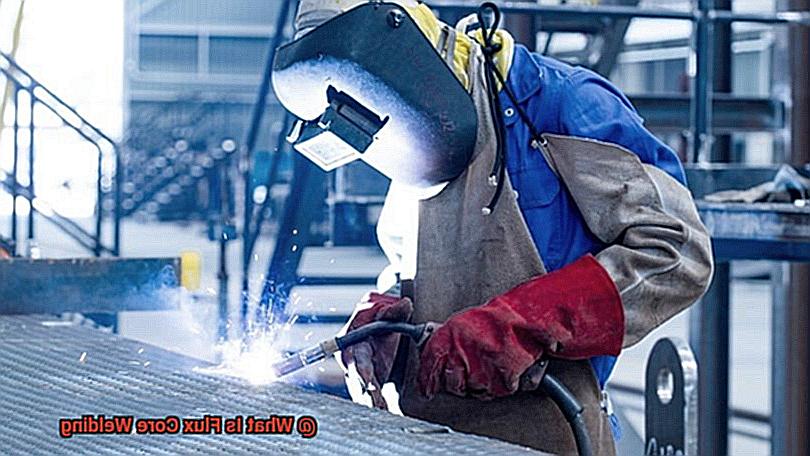
Finally, we have gas-shielded flux core welding that uses an external shielding gas alongside flux to protect the weld from atmospheric contamination.
This type of welding produces high-quality welds with minimal spatter and is commonly used in manufacturing applications such as automotive production and aerospace manufacturing.
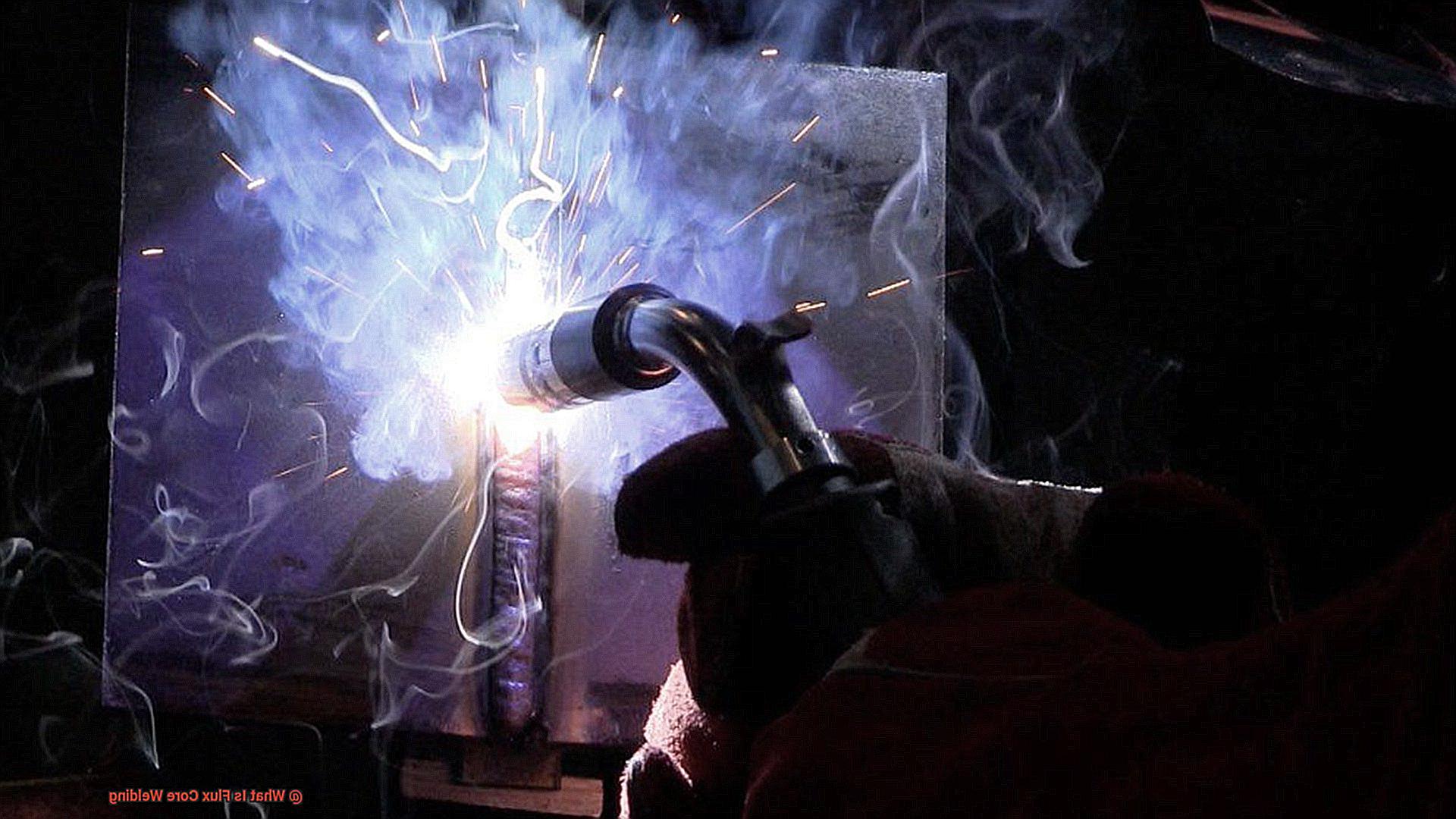
Advantages of Flux Core Welding
Firstly, flux core welding is an incredibly efficient process. It allows you to complete jobs quickly and with minimal effort. The flux core wire contains a flux compound that acts as a shielding agent, eliminating the need for an external shielding gas. This means you can work in windy or drafty conditions without worrying about the gas being blown away. Talk about convenience.
Secondly, flux core welding produces high-quality welds with excellent fusion and good penetration. The flux compound in the wire helps to remove impurities from the metal as it melts, resulting in a cleaner weld. Additionally, the high heat levels generated by flux core welding allow for deep penetration, making it perfect for welding thicker materials.
Thirdly, flux core welding is extremely versatile and can be used on a wide variety of metals, including mild steel, stainless steel, and aluminum. This makes it a popular choice among welders who work with different types of materials. Plus, since it can be performed both indoors and outdoors, it’s an all-around convenient option for welders who need to move around frequently.
Lastly, flux core welding is generally more affordable than other welding processes since it doesn’t require an external shielding gas. This means you can save money while still producing high-quality welds. And who doesn’t love saving money?
Applications of Flux Core Welding
Flux core welding is the ultimate superhero of welding processes. It saves the day when high-quality welds are required, but time and cost are crucial factors. This versatile process finds its applications in various industries, from shipbuilding to construction to pipelines. Even DIY enthusiasts can rely on it for their small-scale projects like metal fence building or exhaust pipe repairs.
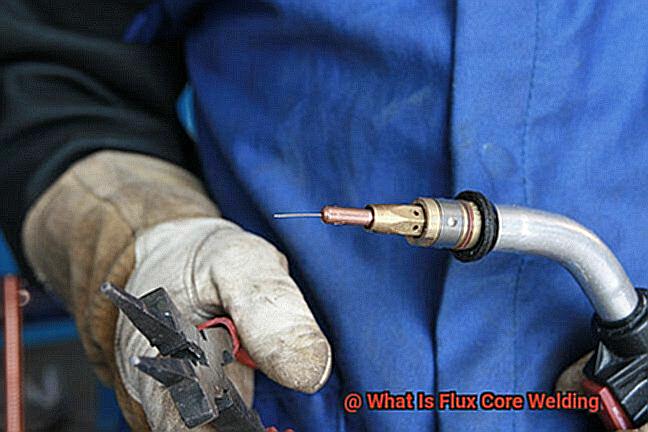
One of the most common applications of flux core welding is in shipbuilding. The welding process’s high deposition rate allows for faster welding speeds, making it indispensable in joining large plates of steel together efficiently. In shipbuilding, where speed and seaworthiness are essential, flux core welding provides a reliable bond that withstands the test of time.
The construction industry also relies heavily on flux core welding for heavy equipment and machinery. These machines are subjected to heavy loads and stresses, making it crucial that the welds holding them together are strong and durable. Flux core welding provides a bond that can withstand even the toughest jobs, from bulldozers and excavators to cranes and forklifts.
Pipelines are another industry where flux core welding’s strength comes in handy. Transporting oil or gas requires pipes that can withstand extreme temperatures and pressures without leaking or failing. Flux core welding can provide a strong, leak-free bond that resists corrosion and other forms of degradation, making it an ideal choice for pipeline construction.
But don’t let these big industries fool you – flux core welding is accessible to everyone. DIY enthusiasts can use it for their small-scale projects like repairing a cracked exhaust pipe or building a custom metal fence. With its versatility and ease of use, flux core welding is an excellent choice for any project that requires a strong and reliable bond.
Safety Considerations for Flux Core Welding
Flux core welding is a mighty welding technique, but even the mightiest of techniques require attention to safety. Before you start melting metal, it’s important to consider several key safety factors.
First and foremost, be sure to suit up with the proper protective gear. This includes a welding helmet with a shaded lens to protect your eyes from harmful UV rays and sparks. A fire-resistant welding jacket is also a must-have, so hot metal doesn’t burn through your clothes. Don’t forget gloves, steel-toed boots, and earplugs to shield your hands, feet, and ears.
Ventilation is another critical consideration. Flux core welding produces fumes that can pose a danger if inhaled in large quantities. Ensure you’re working in a well-ventilated area or utilize a fume extractor to remove the fumes from the air. Additionally, it’s essential to avoid welding near flammable materials as sparks and heat can ignite them in a flash.
Proper maintenance of equipment cannot be understated when it comes to safety. Regularly check cables, hoses, and connections for any damage or wear. If you notice anything amiss, repair or replace it before continuing with your project.
Finally, using proper welding techniques and procedures is crucial for safe and effective welding. Use the correct amperage settings, maintain a consistent travel speed, and position the electrode correctly for optimal weld quality.
Flux core welding provides an efficient and effective means of joining metal pieces together. However, it’s vital to prioritize safety and follow these precautions to minimize any risks of injury or equipment damage.
Tips for Successful Flux Core Welding
Flux core welding is an economical and versatile welding technique that can be used for various applications, from hobbyist projects to heavy-duty industrial work. However, to achieve successful flux core welding, there are some essential tips and best practices to keep in mind.
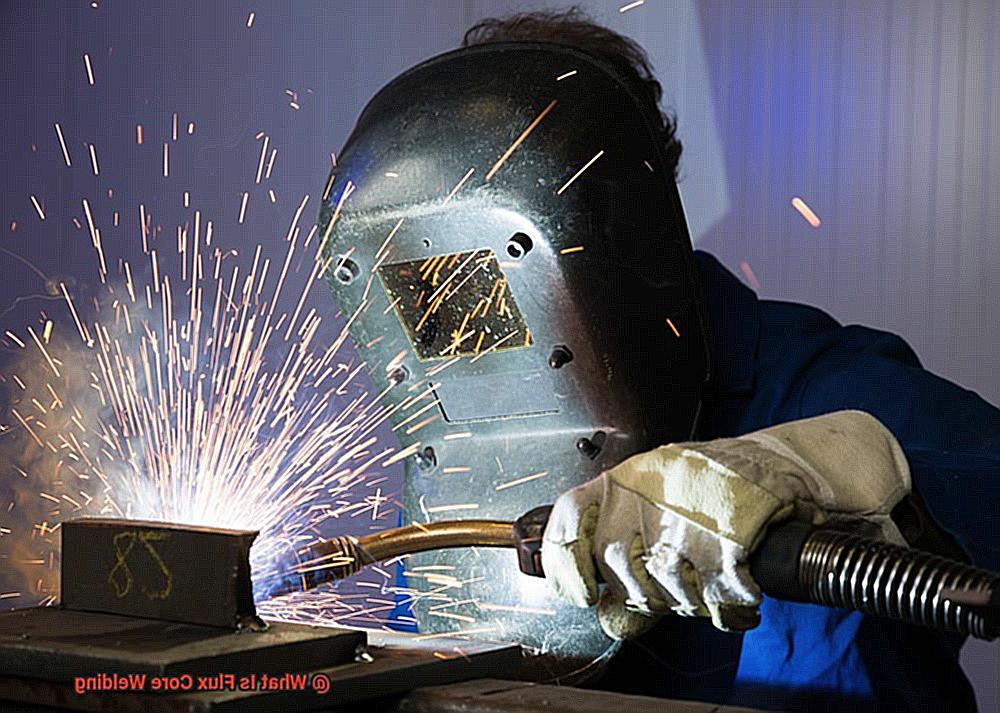
Choose the Right Type of Flux Core Wire
The first tip is to select the appropriate type of flux core wire for your project. There are two primary types: gas-shielded and self-shielded. Gas-shielded flux core wire requires an external shielding gas, while self-shielded flux core wire does not. Depending on your project’s requirements, it’s crucial to choose the right type of wire.
Properly Prepare the Metal Surface
Before beginning the welding process, it’s essential to prepare the metal surface adequately. This involves cleaning the surface thoroughly and removing any rust, paint, or other contaminants that may interfere with the welding process. The metal surface should be free of any oil or grease as well. Additionally, be sure to properly fit the pieces together before welding, as gaps or misalignments can lead to weaker welds.
Use the Correct Amperage and Voltage Settings
To achieve high-quality welds, it’s crucial to use the correct amperage and voltage settings for your specific welding machine and wire size. Using inappropriate settings can result in poor weld quality or even damage to your equipment.
Maintain the Correct Distance Between Torch Tip and Workpiece
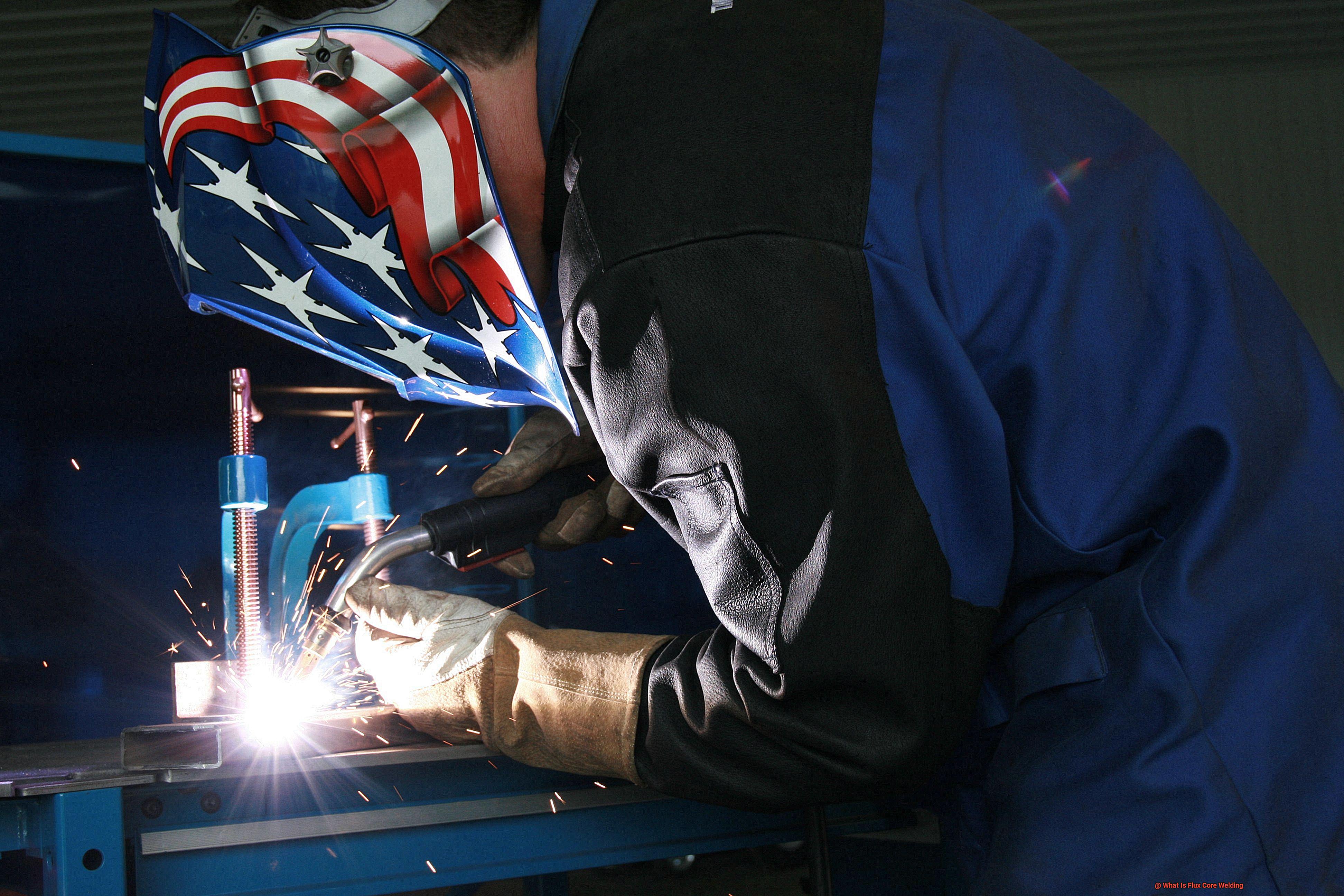
Maintaining the correct distance between the torch tip and the workpiece is crucial for successful flux core welding. The recommended distance typically ranges between ⅜ and ½ inch, but this can vary depending on the wire size and type of metal being welded.
Maintain a Consistent Travel Speed
Finally, it’s important to maintain a consistent travel speed during the welding process. Moving too quickly can result in incomplete penetration, while moving too slowly can lead to over-welding and burn-through.
In addition to these technical tips, there are also some general best practices to keep in mind.
Be sure to wear appropriate protective gear, including gloves, a welding helmet, and flame-resistant clothing. It’s also helpful to practice on scrap metal before starting on your actual project, as this can help you get a feel for the process and work out any issues before you start welding for real.
Finally, be sure to take breaks as needed and stay hydrated throughout the process to avoid fatigue or overheating.
zozvECWvcjk” >
Conclusion
In conclusion, Flux Core Welding is a versatile and efficient welding technique that offers numerous benefits to welders. It’s perfect for outdoor or windy conditions because of its self-shielding wire electrode that eliminates the need for external shielding gas. With three main types of flux core welding available, it’s vital to choose the right one based on your project’s requirements.
Self-shielded flux core welding is ideal for field repairs and construction work. On the other hand, dual-shielded flux core welding is commonly used in heavy fabrication work such as shipbuilding, structural steel work, and pipeline construction. Meanwhile, gas-shielded flux core welding produces high-quality welds with minimal spatter and is commonly used in manufacturing applications.
Flux core welding has several advantages. It’s efficient, produces high-quality welds with excellent fusion and good penetration, versatile across various metals, and affordable compared to other welding processes. It finds its applications across various industries from shipbuilding to construction to pipelines. Even DIY enthusiasts can rely on it for their small-scale projects like metal fence building or exhaust pipe repairs.
However, safety considerations must be kept in mind before starting any welding project. Proper protective gear, ventilation, equipment maintenance, and using proper welding techniques are crucial for safe and effective welding.
